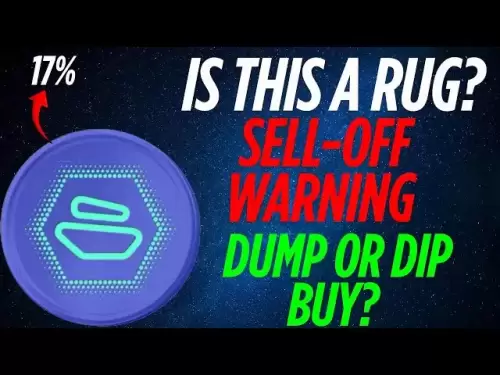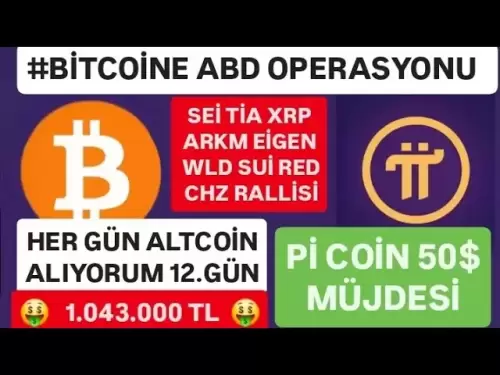-
 Bitcoin
Bitcoin $107,810.8710
-1.45% -
 Ethereum
Ethereum $2,531.4386
-1.75% -
 Tether USDt
Tether USDt $1.0000
-0.03% -
 XRP
XRP $2.2542
-0.99% -
 BNB
BNB $659.1350
-0.50% -
 Solana
Solana $148.5456
-2.40% -
 USDC
USDC $0.9999
-0.02% -
 TRON
TRON $0.2868
-0.44% -
 Dogecoin
Dogecoin $0.1666
-3.65% -
 Cardano
Cardano $0.5751
-2.36% -
 Hyperliquid
Hyperliquid $37.6845
-5.51% -
 Bitcoin Cash
Bitcoin Cash $494.9448
-0.65% -
 Sui
Sui $2.8396
-3.31% -
 Chainlink
Chainlink $13.2423
-2.59% -
 UNUS SED LEO
UNUS SED LEO $9.0482
0.02% -
 Stellar
Stellar $0.2467
-2.44% -
 Avalanche
Avalanche $17.8165
-3.63% -
 Shiba Inu
Shiba Inu $0.0...01158
-2.41% -
 Toncoin
Toncoin $2.7397
-3.42% -
 Hedera
Hedera $0.1560
-2.73% -
 Litecoin
Litecoin $85.8559
-2.34% -
 Monero
Monero $315.3710
-2.30% -
 Dai
Dai $1.0001
0.00% -
 Polkadot
Polkadot $3.3443
-2.03% -
 Ethena USDe
Ethena USDe $1.0001
0.01% -
 Bitget Token
Bitget Token $4.2888
-3.73% -
 Uniswap
Uniswap $7.3388
-1.57% -
 Aave
Aave $278.2986
-3.05% -
 Pepe
Pepe $0.0...09807
-3.67% -
 Pi
Pi $0.4563
-2.39%
How to set up conditional orders on Bitstamp?
Setting up conditional orders on Bitstamp can automate your trades based on specific market conditions, enhancing your trading strategy and risk management.
Apr 23, 2025 at 06:08 pm
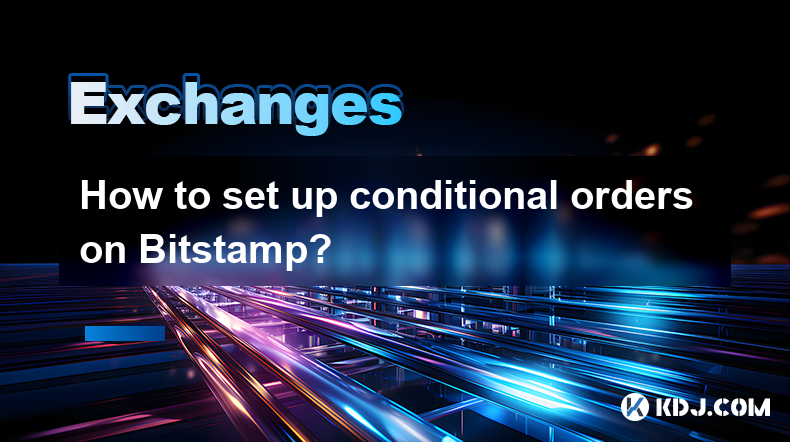
Setting up conditional orders on Bitstamp can significantly enhance your trading strategy by automating your trades based on specific market conditions. Whether you're looking to buy or sell at certain price levels or manage risk more effectively, conditional orders can be a powerful tool in your trading arsenal. In this article, we will guide you through the process of setting up conditional orders on Bitstamp, covering everything from the types of conditional orders available to step-by-step instructions on how to place them.
Understanding Conditional Orders
Before diving into the setup process, it's essential to understand what conditional orders are and the types available on Bitstamp. Conditional orders, also known as advanced orders, are instructions to buy or sell a cryptocurrency when certain conditions are met. Bitstamp offers several types of conditional orders, including stop orders, limit orders, and take-profit orders.
- Stop Orders: These are used to buy or sell a cryptocurrency when it reaches a specified price, known as the stop price. They are often used to limit losses or protect profits.
- Limit Orders: These orders are placed to buy or sell at a specific price or better. They allow you to set a maximum purchase price or minimum sale price.
- Take-Profit Orders: These are used to lock in profits by selling a cryptocurrency when it reaches a certain price level.
Accessing the Trading Platform
To set up conditional orders, you first need to access Bitstamp's trading platform. Here’s how you can do it:
- Log into your Bitstamp account: Visit the Bitstamp website and enter your credentials to log in.
- Navigate to the trading section: Once logged in, go to the trading section by clicking on the "Trade" tab at the top of the page.
- Select the trading pair: Choose the cryptocurrency pair you want to trade, such as BTC/USD or ETH/BTC.
Setting Up a Stop Order
Stop orders are particularly useful for managing risk. Here's how to set up a stop order on Bitstamp:
- Click on the "New Order" button: This is usually located on the trading interface.
- Select "Stop Order" from the order type dropdown menu: You will see various options for order types; choose "Stop Order".
- Enter the stop price: This is the price at which you want the order to be triggered. For example, if you want to sell Bitcoin at $30,000, enter $30,000 as the stop price.
- Specify the amount: Enter the amount of cryptocurrency you want to buy or sell.
- Review and submit the order: Double-check all the details, then click "Submit" to place the order.
Setting Up a Limit Order
Limit orders allow you to set a specific price at which you want to buy or sell. Here's how to set one up:
- Click on the "New Order" button: As with the stop order, start by clicking "New Order".
- Select "Limit Order" from the order type dropdown menu: Choose "Limit Order" from the list of available order types.
- Enter the limit price: This is the price at which you want to buy or sell. For instance, if you want to buy Ethereum at $2,000, enter $2,000 as the limit price.
- Specify the amount: Enter the amount of cryptocurrency you want to trade.
- Review and submit the order: Ensure all details are correct, then click "Submit" to place the order.
Setting Up a Take-Profit Order
Take-profit orders help you lock in profits by selling at a predetermined price. Here's how to set one up:
- Click on the "New Order" button: Start the process by clicking "New Order".
- Select "Take-Profit Order" from the order type dropdown menu: Choose "Take-Profit Order" from the available options.
- Enter the take-profit price: This is the price at which you want to sell. For example, if you want to sell Bitcoin at $40,000, enter $40,000 as the take-profit price.
- Specify the amount: Enter the amount of cryptocurrency you want to sell.
- Review and submit the order: Verify all the details, then click "Submit" to place the order.
Monitoring and Managing Conditional Orders
Once you've placed your conditional orders, it's important to monitor and manage them effectively. Bitstamp provides a user-friendly interface for this purpose:
- Check the "Orders" tab: Navigate to the "Orders" tab to see all your active orders, including conditional ones.
- Modify or cancel orders: If market conditions change, you can modify or cancel your conditional orders by clicking on the respective order and selecting "Modify" or "Cancel".
- Use the order history: The "Order History" section allows you to review past orders and understand how your conditional orders have performed.
Common Mistakes to Avoid
When setting up conditional orders, there are several common mistakes to avoid to ensure your trading strategy remains effective:
- Setting unrealistic prices: Ensure your stop, limit, and take-profit prices are realistic based on current market conditions.
- Not monitoring orders: Even though conditional orders are automated, it's crucial to keep an eye on them and adjust as necessary.
- Overcomplicating strategies: While conditional orders can enhance your trading, overcomplicating your strategy with too many conditional orders can lead to confusion and potential losses.
Frequently Asked Questions
Q: Can I set up multiple conditional orders for the same cryptocurrency pair on Bitstamp?
A: Yes, you can set up multiple conditional orders for the same cryptocurrency pair. This allows you to implement different trading strategies simultaneously, such as setting both a stop loss and a take-profit order for the same asset.
Q: Are there any fees associated with conditional orders on Bitstamp?
A: Bitstamp charges trading fees based on your trading volume and the type of order. Conditional orders are subject to the same fee structure as regular orders. You can find detailed information about fees on the Bitstamp website.
Q: How long do conditional orders remain active on Bitstamp?
A: Conditional orders on Bitstamp remain active until they are either executed, canceled by you, or expire based on the platform's rules. It's important to monitor your orders and understand the expiration policies to manage your trades effectively.
Q: Can I set up conditional orders using the Bitstamp mobile app?
A: Yes, you can set up conditional orders using the Bitstamp mobile app. The process is similar to the web platform, allowing you to manage your trades on the go.
Disclaimer:info@kdj.com
The information provided is not trading advice. kdj.com does not assume any responsibility for any investments made based on the information provided in this article. Cryptocurrencies are highly volatile and it is highly recommended that you invest with caution after thorough research!
If you believe that the content used on this website infringes your copyright, please contact us immediately (info@kdj.com) and we will delete it promptly.
- Ethereum, Exchanges, and Price Resilience: Navigating the Crypto Landscape
- 2025-07-08 08:30:13
- Bitcoin's NVT Golden Cross: Is a Local Top Brewing?
- 2025-07-08 09:10:11
- Semler Scientific's Bitcoin Bonanza: A Cryptocurrency Goal?
- 2025-07-08 09:10:11
- From Coin Flips to Cityscapes: How Names, Parks, and Planting Shaped St. Albert
- 2025-07-08 08:50:12
- Candles, Laundromats, and Inspiration: A Surprising New York Story
- 2025-07-08 09:15:11
- Iron Maiden Rocks the Royal Mint: A 50th Anniversary Coin That Kicks Ass
- 2025-07-08 09:15:11
Related knowledge

How to recover a lost Binance account
Jul 07,2025 at 09:07pm
What Happens When a Binance Account Is Lost?Losing access to your Binance account can be a distressing experience, especially if you hold significant digital assets. This typically occurs due to forgotten login credentials, loss of two-factor authentication (2FA) devices, or compromised accounts. Understanding the exact reason behind losing access is cr...
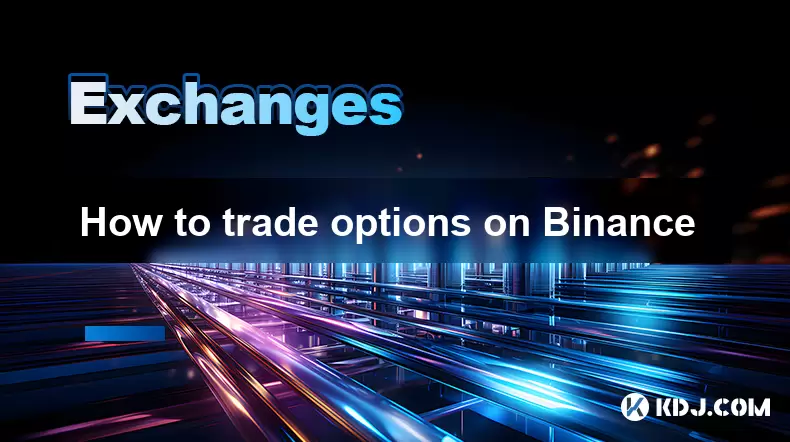
How to trade options on Binance
Jul 08,2025 at 04:35am
Understanding Options Trading on BinanceOptions trading allows investors to speculate on the future price of an asset without owning it. On Binance, users can trade crypto options, which are derivative contracts that give traders the right—but not the obligation—to buy or sell a cryptocurrency at a predetermined price before a specific date. This form o...
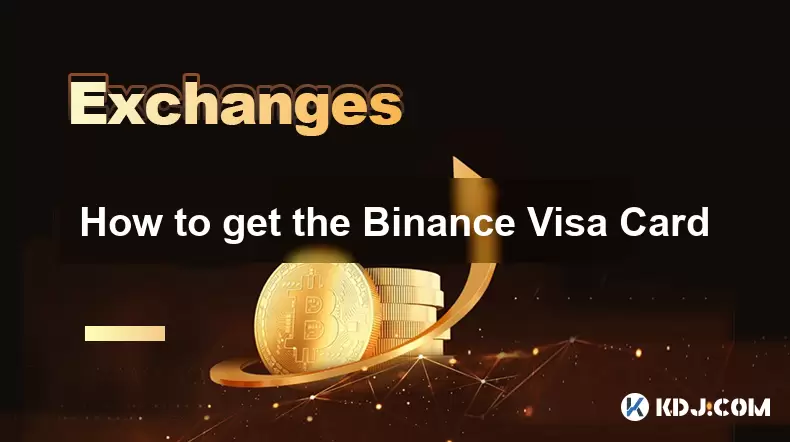
How to get the Binance Visa Card
Jul 08,2025 at 07:36am
What Is the Binance Visa Card?The Binance Visa Card is a cryptocurrency-linked payment solution that allows users to spend their digital assets in everyday transactions. Whether you're purchasing groceries, booking travel, or shopping online, this card enables seamless integration of crypto into your financial lifestyle. Unlike traditional debit or cred...

How to read Binance charts
Jul 07,2025 at 08:14pm
Understanding the Basics of Binance ChartsReading Binance charts effectively is essential for making informed trading decisions in the cryptocurrency market. Before diving into technical indicators and candlestick patterns, it's important to understand the basic layout of a chart on the Binance platform. The default chart interface displays price moveme...
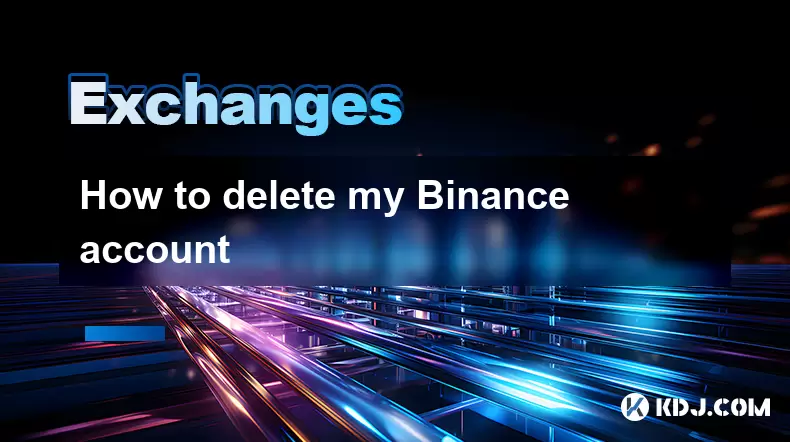
How to delete my Binance account
Jul 08,2025 at 06:35am
How to Delete My Binance AccountIf you're considering deleting your Binance account, it's important to understand the process thoroughly. Binance is one of the largest cryptocurrency exchanges globally, and permanently closing your account involves several steps. This guide will walk you through each necessary action to ensure a smooth deletion. Prepari...
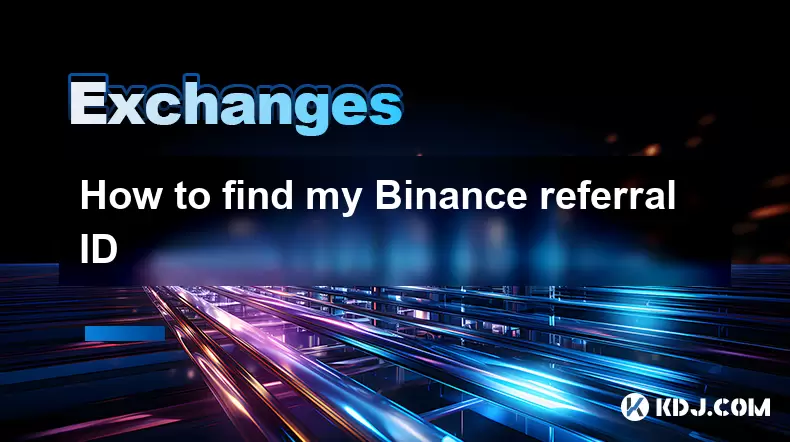
How to find my Binance referral ID
Jul 07,2025 at 06:29pm
What is a Binance Referral ID?A Binance Referral ID is a unique identifier assigned to each user on the Binance platform. This ID allows users to refer new traders to Binance and earn commissions from their trading fees. The referral program is an integral part of Binance’s ecosystem, encouraging community growth and rewarding active participants. Every...

How to recover a lost Binance account
Jul 07,2025 at 09:07pm
What Happens When a Binance Account Is Lost?Losing access to your Binance account can be a distressing experience, especially if you hold significant digital assets. This typically occurs due to forgotten login credentials, loss of two-factor authentication (2FA) devices, or compromised accounts. Understanding the exact reason behind losing access is cr...

How to trade options on Binance
Jul 08,2025 at 04:35am
Understanding Options Trading on BinanceOptions trading allows investors to speculate on the future price of an asset without owning it. On Binance, users can trade crypto options, which are derivative contracts that give traders the right—but not the obligation—to buy or sell a cryptocurrency at a predetermined price before a specific date. This form o...

How to get the Binance Visa Card
Jul 08,2025 at 07:36am
What Is the Binance Visa Card?The Binance Visa Card is a cryptocurrency-linked payment solution that allows users to spend their digital assets in everyday transactions. Whether you're purchasing groceries, booking travel, or shopping online, this card enables seamless integration of crypto into your financial lifestyle. Unlike traditional debit or cred...

How to read Binance charts
Jul 07,2025 at 08:14pm
Understanding the Basics of Binance ChartsReading Binance charts effectively is essential for making informed trading decisions in the cryptocurrency market. Before diving into technical indicators and candlestick patterns, it's important to understand the basic layout of a chart on the Binance platform. The default chart interface displays price moveme...

How to delete my Binance account
Jul 08,2025 at 06:35am
How to Delete My Binance AccountIf you're considering deleting your Binance account, it's important to understand the process thoroughly. Binance is one of the largest cryptocurrency exchanges globally, and permanently closing your account involves several steps. This guide will walk you through each necessary action to ensure a smooth deletion. Prepari...

How to find my Binance referral ID
Jul 07,2025 at 06:29pm
What is a Binance Referral ID?A Binance Referral ID is a unique identifier assigned to each user on the Binance platform. This ID allows users to refer new traders to Binance and earn commissions from their trading fees. The referral program is an integral part of Binance’s ecosystem, encouraging community growth and rewarding active participants. Every...
See all articles

























